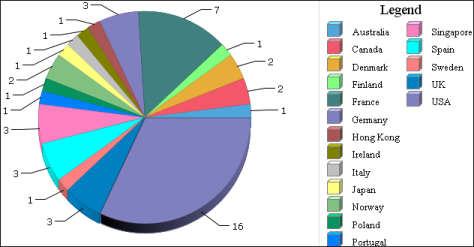Another item to consider when choosing a chart type is the number of data values to display. Some charts, such as scatter charts, reveal trends more clearly when there are more data values. Other charts, such as pie charts, are more effective when there are fewer data values. For example, the pie chart in Figure 8-6 is difficult to read, because it displays too many data values.

